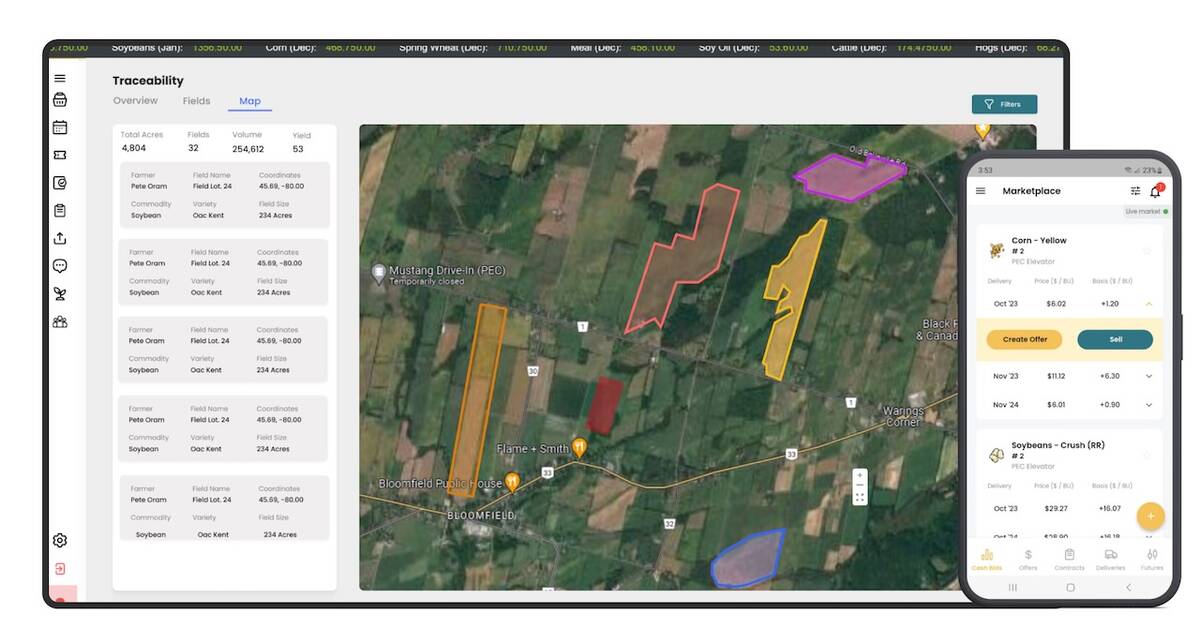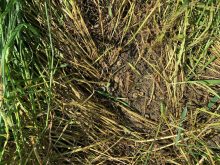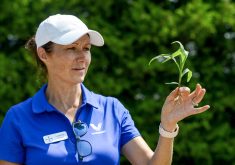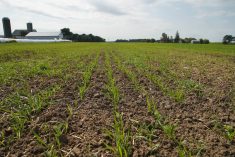Last year brought many surprises, including a few agronomic ones.
Agronomists and presenters Patrick O’Neill, Carrie Davenport and Hanna Petrovsky recently shared some of the challenges, wins and lessons observed during a year of extremes during the virtual Ontario Agricultural Conference.
The 2021 growing season started early for O’Neill, his colleagues and farmers in the Napanee area. Dry early spring conditions, plus a little heat, got machines rolling early enough to plant a substantial portion of the region’s corn crop.
Read Also

Ontario company Grain Discovery acquired by DTN
Grain Discovery, an Ontario comapny that creates software for the grain value chain, has been acquired by DTN.
Mild winter
Then compaction-related losses became evident, particularly on potassium-stressed fields. There were lower plant populations, stunted plants and nutrient deficiencies.
A relatively mild winter was the cause. A reduced freeze-thaw cycle and lack of deep frost contributed to the staying power of compaction from the previous year, compounding conditions in 2021.
“I think in general we have not thought about winter conditions when planning our spring activities. It definitely hasn’t been in the front of our minds,” says O’Neill.
“In clay soils, no matter what scenario you’re under, no matter the winter, they are always going to be the most tricky, particularly a winter when we don’t have those freeze-thaw cycles.”
Solutions: Consider how winter conditions will affect compaction. Incorporate soil health tools such as cover crops, drainage and compaction-reducing machinery when possible.
Insect issues arise
Aphid infestations also caused concern in the Napanee area at the end of June and early July. It coincided with in-field application activity and several significant weather delays. Conditions were ideal for aphids.
The most vulnerable fields were those already under stress from low fertility, drought and compaction. Fields planted with non-treated soybean seed also proved more vulnerable. Fortunately for the growers in O’Neill’s region, effective control was achieved after tank-mixing insecticide with herbicide and fungicide.
“All in all, our control methods were quite effective. We didn’t see populations re-establish three or four weeks later,” he says.
Solutions: It’s a myth that heavy rainfall will wash aphids off a crop. Employ seed treatments and in-season insecticide that is friendly to beneficial insects to control aphids.
Severe weather events
Corn and soybean growers in the Hamilton region contended with severe hail events in 2021, some of which caused extensive damage.
Petrovsky says many corn fields she and her County Ag Services colleagues examined initially looked like write-offs. However, they came back strongly, thanks in part to significant moisture.
“With all that moisture, that crop just kept on growing,” she says, referring to one particularly hard-hit corn field. The results were still less than ideal at harvest, with yields averaging 150 bushels per acre instead of the usual 200.
The troubles from hail-hit soybeans were greater. Some fields were stripped of foliage, and rain made it difficult or impossible to replant. Many fields looked good from the road a month later, but much of the visible green came from lamb’s quarters and pigweed.
“We really learned an important lesson on weed control. When you injure that canopy and decrease crop competition, it just leaves space for those weeds to push through and out compete the crop,” says Petrovsky.
Citing a 19-bushel per acre yield in one hard-hit soybean field, she believes a double crop might have been a better option. Regardless, she says it’s important to thoroughly examine the severity of storm damage and then calculate the potential of the crop against possible remedial action.
“We have to look at the yield potential that is still there. I don’t think a product is necessarily going to bring the yield potential back to 100 per cent, but if there’s something there, we need to protect it going forward.”
Hail was also a problem in the Grey and Bruce counties, according to Davenport. Many growers working with Georgian View Ag Services experienced variable soybean quality, though a preharvest burndown provided a partial remedy and helped the crop withstand an early snowfall.
Another cold killer, frost, was a problem in that region. Though hard on corn, Davenport says soybeans were “a very different deal.”
They were at many different stages when a three-day frost occurred, leading to varied damage. Low-lying areas and those with more residue were hardest hit.
Many acres were replanted, though Davenport says it is crucial to wait for some regrowth before deciding to do that. The frost event coincided with early-season weed control efforts, posing an additional problem.
“Products like dicamba the crop has to metabolize. Putting it though more stress…wouldn’t be ideal. It would drop your yield potential immediately,” she says.
“Take time. Take four days. I know its hard to do. We want to push and get things done, especially in spring, when there are other things on the list.”
Solutions: Take extra time to walk fields and identify areas damaged by hail and frost, and to what extent. Quantify and evaluate potential management decisions against the potential of the damaged crop.













